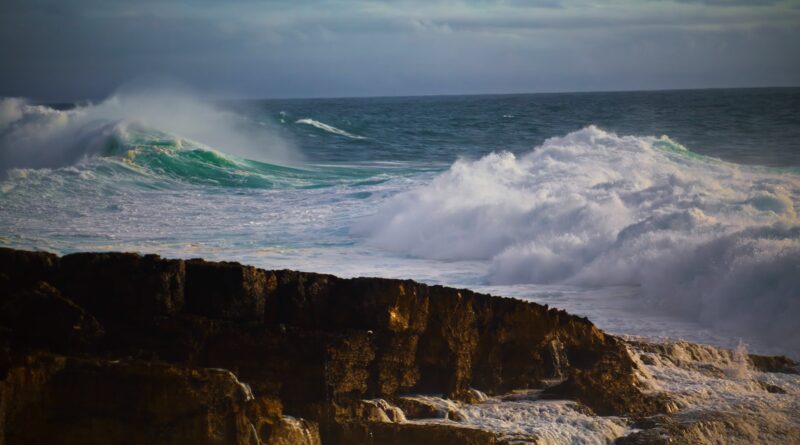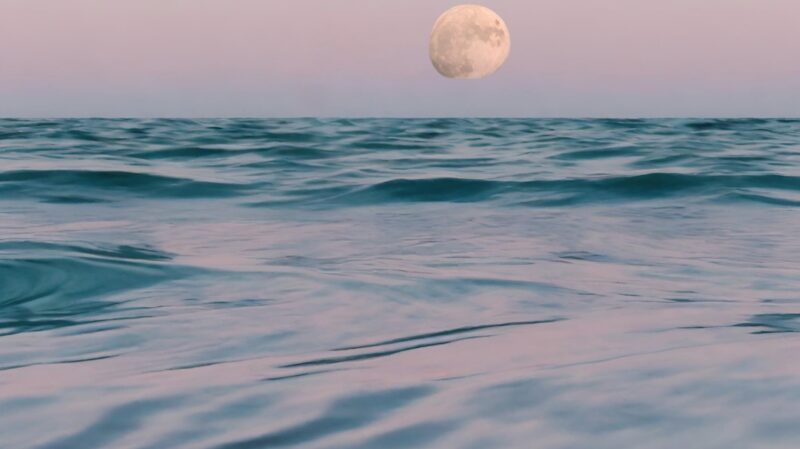Tides, the daily rise and fall of sea levels, are a marvel of nature that has intrigued humans for centuries. Among the various types of tides, neap tides stand out for their unique characteristics and effects on coastal environments.
But what exactly is a neap tide, and why should we care about it? In this article, we’ll explore these tides, shedding light on their causes, characteristics, and significance in our natural world.
Key Takeaways
- Neap tides occur twice a month when the gravitational forces of the moon and the sun counteract each other, leading to a minimal tidal range with lower high tides and higher low tides.
- The occurrence of neap tides is during the first and third quarters of the moon when the sun and moon form a right angle relative to the Earth.
- They have significant ecological impacts, including the distribution of nutrients in intertidal zones and the reproductive cycles of many marine species, which are adapted to coincide with these tidal patterns.
What is the Mechanism Behind Tides?
Tides are the result of the gravitational pull of the moon and the sun on the Earth’s oceans. This gravitational force causes the water to bulge out on the side of the Earth facing the moon and the opposite side as well, leading to high tides, while the areas in between experience low tides.
The cycle of tides is a continuous and predictable phenomenon that greatly affects marine life and human activities along coastlines. If you’ve ever wondered about the world’s highest tide, read our article.
The Moon’s Influence
The moon plays a pivotal role in the creation of tides due to its proximity to the Earth. Its gravitational pull is the dominant force that shapes the tidal patterns we observe. The sun, despite its massive size, has a lesser influence on tides because of its greater distance from the Earth.
The moon’s orbit around the Earth causes the timing and height of the tides to change over a monthly cycle. The gravitational pull of the moon not only affects the oceans but also can cause slight deformations of the Earth’s crust, showing the immense power of lunar gravity.
Moreover, the moon’s phases are directly linked to the variation in tidal patterns, influencing the intensity and occurrence of both spring and neap tides.
Solar Influence and Tidal Variations

The sun’s gravitational force, though less than the moon’s, combines with the lunar forces to create different tidal effects. When the sun, moon, and Earth align during the full and new moons, we experience spring tides, characterized by higher high tides and lower low tides.
Conversely, when the sun and moon are at right angles to each other, we see a reduction in the tidal range, leading to neap tides. The sun’s influence adds an additional layer of complexity to the tidal patterns, creating a rhythm that varies throughout the year as the Earth orbits the sun.
This solar-lunar interaction is essential for predicting tides, which is crucial for maritime navigation and planning coastal activities. Additionally, the gravitational pull of the sun helps to moderate the extremes of the tides, ensuring that the difference between high and low tides remains within certain limits.
What Are Neap Tides?

Neap tides are a type of tides that occur twice a month and are the result of the gravitational forces of the moon and the sun counteracting each other. During these periods, the difference between high tide and low tide is minimal, leading to less extreme tidal conditions.
Neap tides happen during the first and third quarters of the moon when the sun and moon form a right angle relative to the Earth. These tides play a significant role in the stability of marine environments, offering periods of minimal water movement that can be beneficial for the development of certain marine organisms.
Neap tides also provide a predictable pattern that can be used by coastal managers and environmental scientists to plan activities and studies.
Characteristics of Neap Tides

Neap tides are characterized by the following:
- Lower high tides: The high tides are not as high as during other times of the month.
- Higher low tides: The low tides are not as low as usual.
- Minimal tidal range: The difference between the high tide and low tide is less pronounced.
These characteristics result in more stable and predictable marine and coastal environments, which can be particularly advantageous for marine construction projects and the operation of tidal energy generation systems.
The reduced tidal range also facilitates easier access for coastal and marine research, allowing scientists to study ecosystems with minimal disturbance. Additionally, neap tides offer a safer environment for recreational activities in the intertidal zone, such as tide pooling and beach exploration, by reducing the risk of being caught in strong tidal currents.
Why are They Important?

Neap tides have various ecological and human impacts:
1. Ecological Impact
| Aspect | Impact of Neap Tides |
| Intertidal Zones | They create reduced variation in water levels, fostering stable environments in intertidal zones. This stability supports delicate ecosystems and facilitates the growth of specialized plant and animal species. Neap tides also aid in sediment deposition, crucial for the formation and maintenance of habitats like salt marshes and mangroves. |
| Marine Life | Neap tides influence the reproductive cycles of marine species, providing calmer waters conducive to spawning and hatching. They also facilitate the settlement of larvae and juveniles in coastal nurseries with reduced predation risk. Certain species rely on neap tides to trigger behaviors such as migration and feeding, essential for their survival and ecological role. |
2. Human Impact
- Navigation: Neap tides can affect the navigability of certain waterways, making some areas more difficult to access for boats and ships. However, they also offer a period of predictability and stability, which can be advantageous for planning maritime operations and maintenance activities in harbors and along coastlines. The reduced tidal range during neap tides minimizes the risk of grounding for vessels, making it an ideal time for small boat excursions and educational trips in tidal areas.
- Fishing: Fishing activities can be influenced by neap tides, as fish patterns may change with the tides. The predictable movement of fish during these times can benefit both commercial and recreational fishing, allowing for targeted efforts when certain species are more accessible. Moreover, the calmer waters can make fishing activities safer and more enjoyable, enhancing the overall experience.
- Coastal Management: Understanding neap tides is crucial for coastal management practices, including the construction of sea defenses and the management of coastal erosion. The predictable and moderate conditions of neap tides provide an optimal window for conducting coastal defense inspections, repairs, and constructions with minimal interference from extreme tidal conditions. This knowledge also aids in the planning and implementation of erosion control measures, ensuring the protection of vulnerable shorelines and the preservation of valuable coastal ecosystems.
FAQs
How do neap tides affect the salinity of estuaries?
Neap tides can lead to reduced mixing of fresh and saltwater in estuaries, potentially resulting in more stratified salinity levels. This stratification can impact the distribution of species and the health of estuarine ecosystems.
Can the occurrence of neap tides influence weather patterns along the coast?
While they do not directly influence weather patterns, the associated stable and calm tidal conditions can affect local microclimates along the coast, such as fog formation and local wind patterns.
Are neap tides more common in certain parts of the world?
Neap tides occur globally, but the extent to which they are noticeable can vary depending on the geography of the area. Regions with larger tidal ranges might experience more pronounced differences between spring tides and neap tides.
How do animals in the intertidal zone adapt to the conditions of neap tides?
Animals in the intertidal zone may adapt by adjusting their feeding and reproductive behaviors to the more stable conditions of neap tides. For example, some species might time their spawning to coincide with neap tides to ensure the safety of their eggs or larvae.
Do neap tides have any impact on tidal energy generation?
Yes, they have. The reduced tidal range leads to lower velocities of water movement, which can result in decreased efficiency of tidal energy converters during these periods.
How do neap tides influence sediment transport and deposition along shorelines?
During neap tides, the gentler and less dynamic water movement can lead to reduced sediment transport and increased deposition. This can result in the temporary stabilization of sandy beaches and mudflats, impacting shoreline morphology and habitat formation.
The Bottom Line
In conclusion, neap tides are a natural phenomenon resulting from the specific alignment of the Earth, moon, and sun, leading to minimal differences between high and low tides. These tides occur twice a month and have a significant impact on both ecological systems and human activities.
They affect the distribution of organisms and nutrients in intertidal zones, influence marine life’s reproductive cycles, and impact navigation, fishing, and coastal management practices. Understanding neap tides is crucial for predicting their effects on the environment and planning activities around them.
Overall, neap tides are an important part of the natural world, influencing the rhythm of life in coastal and marine environments.
